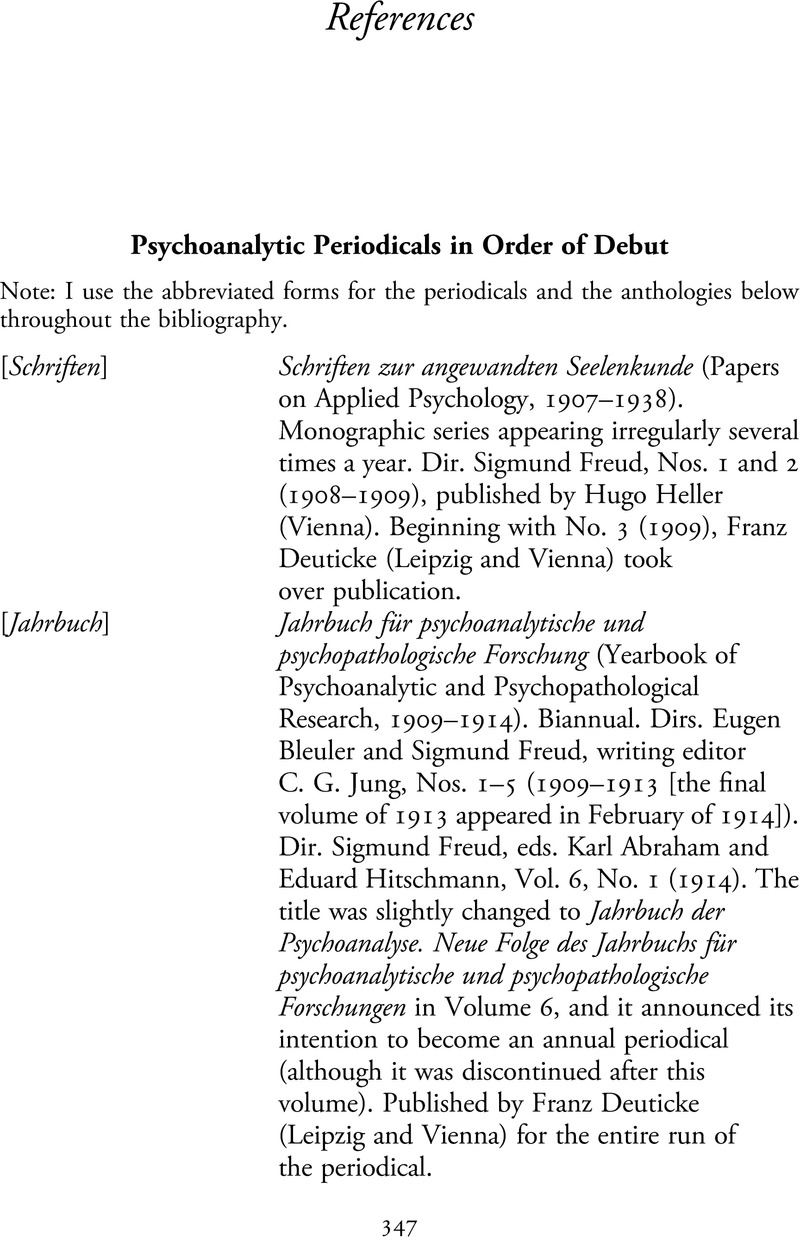Book contents
- Freud, Jung, and Jonah
- Freud, Jung, and Jonah
- Copyright page
- Dedication
- Epigraph
- Contents
- Figures
- Acknowledgments
- Note on Sources and Translation
- No. 1 Introduction
- No. 2 The First Numbers and the Five Stages of Periodical Publication
- No. 3 The Religious Rise and Fall of the Zentralblatt
- No. 4 Jonah’s Journey across the Nations
- No. 5 The Holy Romanish Moses
- No. 6 Triangles
- No. 7 A Reflection on “the Christian Aeon” and “Us Jews”
- References
- Index
- References
References
Published online by Cambridge University Press: 13 December 2022
- Freud, Jung, and Jonah
- Freud, Jung, and Jonah
- Copyright page
- Dedication
- Epigraph
- Contents
- Figures
- Acknowledgments
- Note on Sources and Translation
- No. 1 Introduction
- No. 2 The First Numbers and the Five Stages of Periodical Publication
- No. 3 The Religious Rise and Fall of the Zentralblatt
- No. 4 Jonah’s Journey across the Nations
- No. 5 The Holy Romanish Moses
- No. 6 Triangles
- No. 7 A Reflection on “the Christian Aeon” and “Us Jews”
- References
- Index
- References
Summary

- Type
- Chapter
- Information
- Freud, Jung, and JonahReligion and the Birth of the Psychoanalytic Periodical, pp. 347 - 370Publisher: Cambridge University PressPrint publication year: 2022



